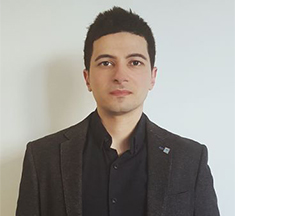
Dr Mohannad Mayyas, Research Fellow, UNSW
Recent studies have predicted a topologically insulating state in some of the two-dimensional (2D) post transition metals and metalloids (here referred to as Xenes). This family of materials includes tellurene (Te), selenene (Se), antimonene (Sb), bismuthene (Bi), and stanene (Sn); some of which have been predicted to host nontrivial quantum spin hall states, with insulating sheet interiors and conducting states along their perimeter. Besides, thin films of their corresponding elemental compounds can be topologically nontrivial, known examples are the bismuth selenide and bismuth telluride.
In this context, establishing fast and direct protocols to synthesize these materials becomes a necessity that can be enabled through the interfaces of gallium-based liquid metals (submerged in aqueous solutions). Such liquid-liquid interfaces are atomically smooth and chemically active with a relatively high autogenous surface potential that can reach up to -1.0 V, depending on the aqueous solution chemistry.
When precursor ions of Xenes are introduced into the interfacial zone of liquid metals, the autogenous surface potential present at the interface triggers the deposition process, potentially leading to large films of Xenes or their corresponding 2D metal compounds. Such tributes of liquid metal interfaces offer a functional and dynamic platform to synthesize 2D Xenes that can be chemically modified to obtain the desired topological quantum transport regime
About the presenter
Dr Mohannad Mayyas is a Postdoctoral Fellow working with Professor Kourosh Kalantar-Zadeh at UNSW to further explore and understand the qualities of liquid metals which hold a great prospect as a reaction media for the fabrication of unique forms of two-dimensional materials.
Within FLEET, Dr Mayyas aims to develop novel and scalable approaches to produce atomically-thin carbon and semiconductor materials to support FLEET goals within Enabling Technology Theme B: Device Fabrication and Research theme 1.
